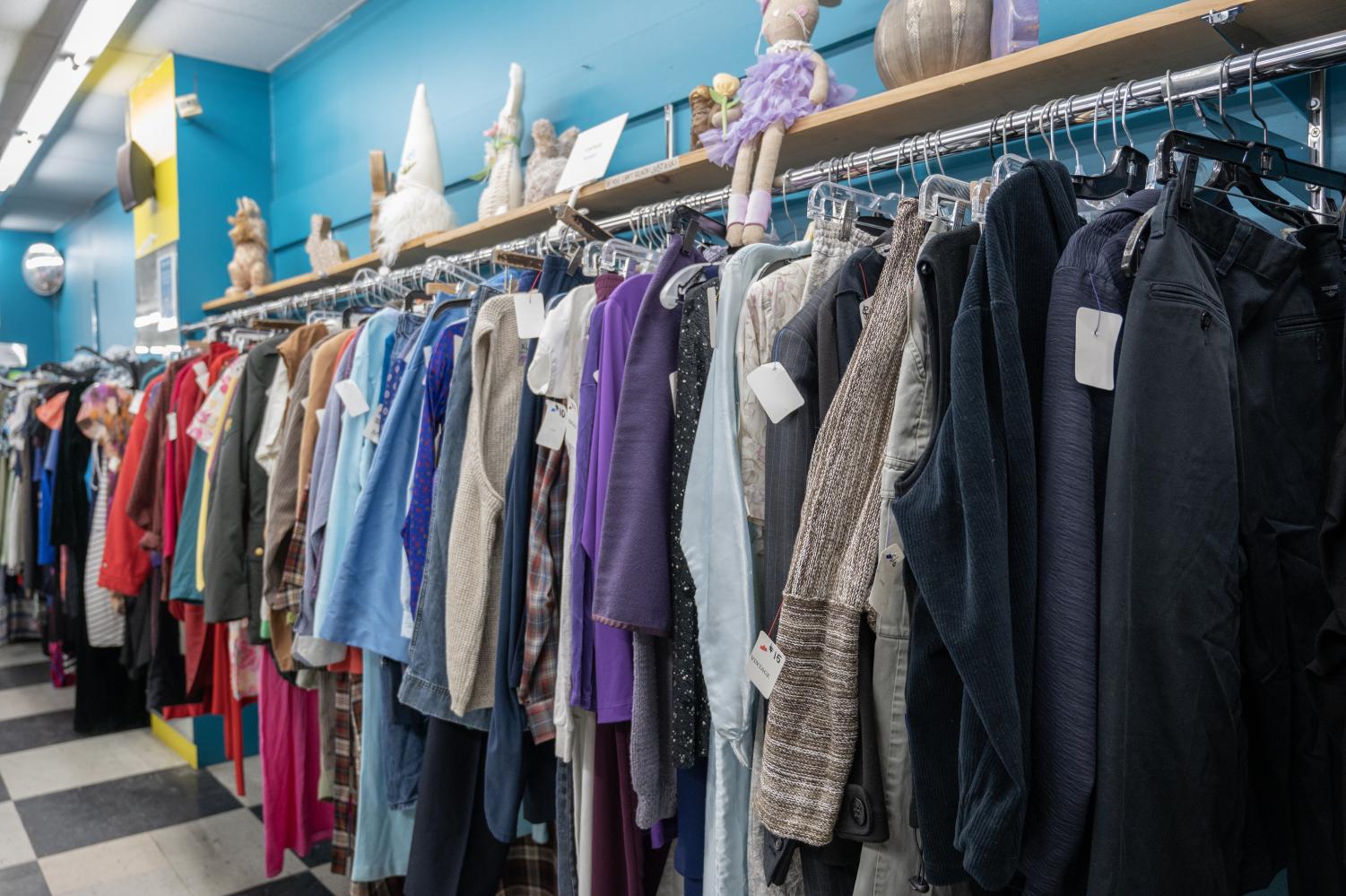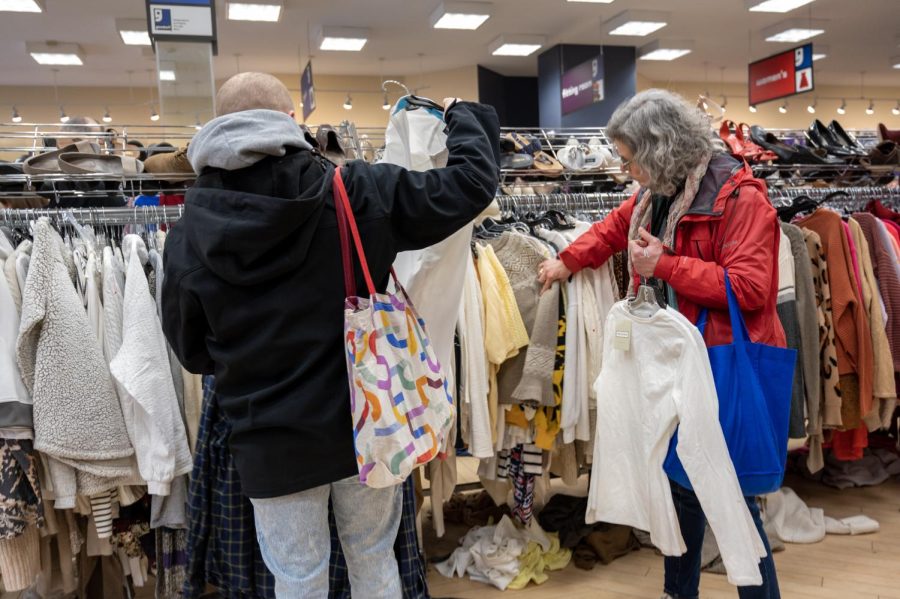Op-Ed: The Ethical Issue of Thrifting in Boston
Customers pull clothes off of racks at a Goodwill in Jamaica Plain. As thrifting became more popular during the pandemic, people have wondered if the demand has increased prices and lowered accessibility to affordable clothing.
April 3, 2023
Through the rise of social media trends, thrifting has become a popular and sustainable method for students to get trendy clothing. However, many of these stores were designed to offer affordable clothing for lower income communities. They often focus on providing work clothes for individuals applying for jobs who may be unable to afford the business casual look. One organization near me, Women Giving Back, had stores every weekend where volunteers would help women pick out clothes for job interviews. Essentially, the focus of many of these thrift stores is to help low income people have affordable clothing that gives them a more upscale look.
When trends began to bring thrifting into high demand, many of the clothing racks were empty. Many students, including myself, operate on a budget that makes thrifting appealing, but it may seem that we are taking away a lot of the products that these communities need, because it is often the only store that is affordable for them. Even on a budget, many college students are still able to afford clothing from retail stores but choose to go thrifting instead.
The argument to thrift instead of shop at fast fashion stores comes down to sustainability. Fast fashion chains often use labor in countries where worker’s rights are not a priority and factories are often in poor condition. Due to this, switching to thrift stores brings down the market of fast fashion and instead supports industries that sell second-hand: their goods are not manufactured in-house and therefore do not contribute to fast fashion. However, does this affect the pricing for thrifting? Has this originally affordable shopping option become expensive?
Goodwill, a non-profit organization that has many popular stores and ‘bins’ that offer a wide variety of affordable clothes and other household items. Their stores have become a hot spot for young shoppers looking to find cheap clothes. There are locations all across the country and even a few in Boston along with the numerous other thrift stores in the area. According to The Boston Globe, Goodwill has reported increasing donations and sales of their items since the beginning of the pandemic. The rise in demand has also caused some thrifting companies to raise their prices. This raises the ethical issue of thrifting in Boston.

Personally, I do a lot of thrifting at home and in Boston, but it is extremely important to give back to these organizations. A few times a year, I clean out my closet and donate items to the thrift stores that I frequent, and I know that this will help someone in need. When thrift stores became trendy, sales went up yet donations went down. This meant that many of the people who thrift due to necessity do not have access to clothing. This is when thrifting becomes a problem.
Another trend that has become a consequence is upselling thrifted clothes on apps like Depop and labeling them as ‘vintage.’ This created a whole new market and completely defeats the purpose of thrifting. Instead of using thrift stores to find affordable clothes to add to one’s closet, shelves become bare and resellers make a huge profit. Consequently, low income communities lose access to fully stocked shelves that they often rely on for all of their clothes.
Essentially, thrifting is not an ethical violation, in my opinion. But, making sure that you are also donating clothes and other unneeded supplies back to these thrift stores helps them to restock the shelves that have seen a decrease in donations. When thrift stores continue to have as many donations as they do sales, prices will not see an increase and low income communities will continue to have an affordable store for their needs. Thrifting started to combat the rising landfills and to provide affordable items without any loss of quality. When thrifters continue to contribute to local stores with donations, its original purpose can succeed.







